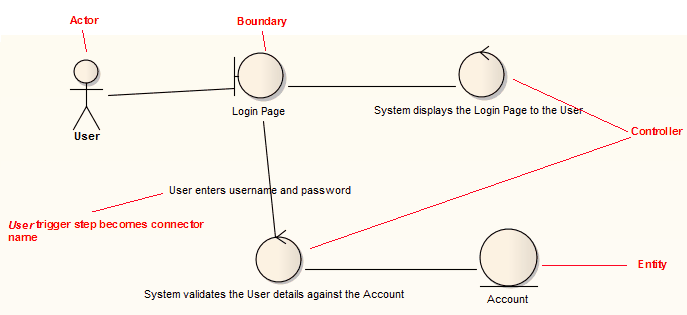| Prev | Next |
Generate Robustness Diagram
When you create a scenario on an element and then generate a Robustness diagram, a Collaboration is created as a child of the selected element to act as a container for the Robustness diagram.
Access
On a diagram or in the Project Browser, select an element and use one of these access paths to display the 'Structured Specification' tab, then click on  and select 'Robustness'.
and select 'Robustness'.
|
Ribbon |
Design > Element > Responsibilities > Scenarios > Structured Specification Design > Element > Properties > Properties Dialog > Responsibilities > Scenarios > Structured Specification |
|
Context Menu |
Right-click on element | Properties | Responsibilities > Scenarios > Structured Specification |
|
Keyboard Shortcuts |
> Scenarios > Structured Specification or > Scenarios > Structured Specification or > Structured Specification |
|
Other |
Double-click on element > Scenarios > Structured Specification |
Notes
Example


Learn more

